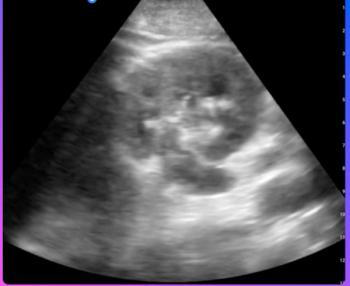
Paling by Comparison
The comparison section in the radiology report.
One of the potential weak spots in teleradiology is comparison of current imaging studies against priors. As an offsite rad, you only know about a patient’s previous exams by the actions of someone onsite-a tech uploading old scans, for instance. Or the ordering clinician says something like “follow up for lung nodule,” or “please compare with priors” (although a disturbing number of referrers use that phrase like a rubber stamp for all their patients, even those being imaged de novo).
Mind you, working onsite is no guarantee that one will have awareness of and access to all prior studies on a patient. There are all sorts of reasons why not: Patient had imaging at other facilities is probably the most common (especially if the patient forgets having done so).
There’s no way to track such things, but I suspect I routinely spend more time on the COMPARISON section of my reports than the average radiological bear. vRad, I’m sure along with other groups, has a clever bit of software that automatically looks through a patient’s imaging history, selects the most recent relevant study, and in addition to displaying the exam opposite the current one will automatically populate your dictation to reference the prior study in question.
A nice saver of time and effort. Of course, my OCD tendencies can’t just leave it at that.
At some point or other, the thought occurred to me that whoever’s reading my report might not be able to access the prior study. They would therefore have no idea what I was comparing against. Or, what if I was given the report of a prior but no images? Even more tenuous, a preliminary report of a prior study but not the final interpretation? How about I had images from a prior but no report for it?[[{"type":"media","view_mode":"media_crop","fid":"51969","attributes":{"alt":"Radiology report","class":"media-image media-image-right","id":"media_crop_7708328711611","media_crop_h":"0","media_crop_image_style":"-1","media_crop_instance":"6432","media_crop_rotate":"0","media_crop_scale_h":"0","media_crop_scale_w":"0","media_crop_w":"0","media_crop_x":"0","media_crop_y":"0","style":"height: 176px; width: 170px; border-width: 0px; border-style: solid; margin: 1px; float: right;","title":"©BlueRingMedia/Shutterstock.com","typeof":"foaf:Image"}}]]
So my reports started saying things like “COMPARISON: Chest X-ray 2/12/09, with report.” Or “Report but no images available from abdominal ultrasound 7/13/15.”
My OCD was only partially appeased. Readers of my reports might have a better idea of what I was working with, but still wouldn’t necessarily know what relevance the comparison studies had to my current interpretation, even if only because they didn’t feel like going and looking up the older exams themselves.
So I started mentioning salient points from the previous studies’ reports, especially when they had included important tidbits of clinical history. “Prior study was performed for history of asthma,” for instance, if I am reporting on a CXR for shortness of breath. Or, if a right upper quadrant sono to rule out cholecystitis is sent my way but previous CT showed cholecystectomy…yeah, I mention that sort of thing. I might also mention it if a patient who’s just had a CTA for possible PE has undergone a dozen such scans in the previous year…and they’ve all been negative.
Not everything that comes to my mind during this process winds up in my report, of course. If I disagree with the previous interpretation, I’m not about to throw chum into the medicolegal waters by highlighting errors I thought other rads had made in the past. For that matter, I’m not looking to turn the COMPARISON section into a radiological version of This Is Your Life; my reports can get long enough as it is.
Do I risk offending referrers, who might resent the implication that I presume to know something about their patients’ backgrounds that they do not? Maybe. Do I risk propagating misinformation, for instance by parroting a previous clinical history’s mention of COPD in a patient who actually has no such condition? Once in a while, probably. Do I cost myself some RVUs of productivity by spending time on this rather than churning through a few more cases per day? Almost certainly. I’d like to think, though, that sometimes I provide valuable diagnostic guidance aside from what I see in pictures.
Newsletter
Stay at the forefront of radiology with the Diagnostic Imaging newsletter, delivering the latest news, clinical insights, and imaging advancements for today’s radiologists.




























